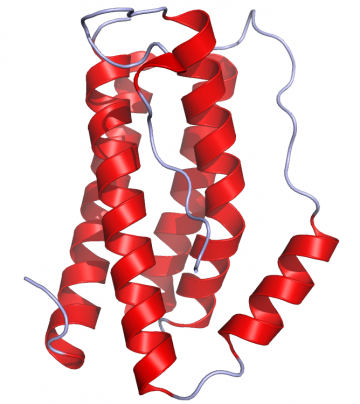Difference between revisions of "Acute Inflammation with a Focus on Sepsis"
Techsensus (talk | contribs) |
Techsensus (talk | contribs) |
||
| Line 2: | Line 2: | ||
== General information == | == General information == | ||
| − | The theme of SensUs 2022 is acute inflammation in intensive care with a focus on sepsis. According to the World Health Organization, sepsis is defined as life-threatening organ dysfunction caused by a dysregulated host response to infection. It causes 11 million deaths each year and affects an estimated 49 million people worldwide.<ref name="Arti2">WHO - Health topics - Sepsis, WHO, 2021, https://www.who.int/health-topics/sepsis#tab=tab_1 </ref> According to experts, the diagnosis of sepsis is often set too late as the symptoms arise when organ injury has already occurred, hence the millions of deaths. Sepsis is one of several acute inflammatory responses; others can be caused by injurious agents such as allergens, toxins, burns, and frostbite.<ref name="Arti3">Acute Inflammatory Response, StatPearls Publishing LLC, 2020, Hannoodee, Sally Nasuruddin, D. N. </ref> Clinically, acute inflammation is characterized by five cardinal signs: redness, increased heat, swelling, pain, and functio laesa (i.e. loss of function). It may be regarded as the first line of defense against injury, releasing signaling molecules such as cytokines and chemokines to assist in healing the body and returning to homeostasis. <ref name="Arti4">Concise Pathology (3rd ed.) | + | The theme of SensUs 2022 is acute inflammation in intensive care with a focus on sepsis. According to the World Health Organization, sepsis is defined as life-threatening organ dysfunction caused by a dysregulated host response to infection. It causes 11 million deaths each year and affects an estimated 49 million people worldwide.<ref name="Arti2">WHO - Health topics - Sepsis, WHO, 2021, https://www.who.int/health-topics/sepsis#tab=tab_1 </ref> According to experts, the diagnosis of sepsis is often set too late as the symptoms arise when organ injury has already occurred, hence the millions of deaths. Sepsis is one of several acute inflammatory responses; others can be caused by injurious agents such as allergens, toxins, burns, and frostbite.<ref name="Arti3">Acute Inflammatory Response, StatPearls Publishing LLC, 2020, Hannoodee, Sally Nasuruddin, D. N. </ref> Clinically, acute inflammation is characterized by five cardinal signs: redness, increased heat, swelling, pain, and functio laesa (i.e. loss of function). It may be regarded as the first line of defense against injury, releasing signaling molecules such as cytokines and chemokines to assist in healing the body and returning to homeostasis. <ref name="Arti4">Concise Pathology (3rd ed.), Appleton & Lange, 1997, Chandrasoma, P., & Taylor, C. R. </ref> |
| − | Interleukin (IL)-6 is a pleiotropic cytokine with a wide range of biological activities. It induces pro- and anti-inflammatory reactions and is rapidly induced in the course of acute inflammatory reactions. IL-6 is produced by lymphoid and nonlymphoid cells and helps regulate immune reactivity, the acute phase response, inflammation, oncogenesis, and hematopoiesis. Studies have shown that IL-6 appears to be both a marker and mediator of sepsis and persists in the plasma much longer than other proinflammatory cytokines.<ref name="Arti5">Interleukin-6. | + | Interleukin (IL)-6 is a pleiotropic cytokine with a wide range of biological activities. It induces pro- and anti-inflammatory reactions and is rapidly induced in the course of acute inflammatory reactions. IL-6 is produced by lymphoid and nonlymphoid cells and helps regulate immune reactivity, the acute phase response, inflammation, oncogenesis, and hematopoiesis. Studies have shown that IL-6 appears to be both a marker and mediator of sepsis and persists in the plasma much longer than other proinflammatory cytokines.<ref name="Arti5">Interleukin-6. Critical Care Medicine, 33(12 Suppl), S463-5, 2005, Song, M., & Kellum, J. A. https://doi.org/10.1097/01.ccm.0000186784.62662.a1 </ref> Therefore IL-6 serves as a valuable biomarker for the early detection of sepsis. |
== References == | == References == | ||
<references /> | <references /> | ||
Revision as of 18:30, 18 November 2021

General information
The theme of SensUs 2022 is acute inflammation in intensive care with a focus on sepsis. According to the World Health Organization, sepsis is defined as life-threatening organ dysfunction caused by a dysregulated host response to infection. It causes 11 million deaths each year and affects an estimated 49 million people worldwide.[2] According to experts, the diagnosis of sepsis is often set too late as the symptoms arise when organ injury has already occurred, hence the millions of deaths. Sepsis is one of several acute inflammatory responses; others can be caused by injurious agents such as allergens, toxins, burns, and frostbite.[3] Clinically, acute inflammation is characterized by five cardinal signs: redness, increased heat, swelling, pain, and functio laesa (i.e. loss of function). It may be regarded as the first line of defense against injury, releasing signaling molecules such as cytokines and chemokines to assist in healing the body and returning to homeostasis. [4]
Interleukin (IL)-6 is a pleiotropic cytokine with a wide range of biological activities. It induces pro- and anti-inflammatory reactions and is rapidly induced in the course of acute inflammatory reactions. IL-6 is produced by lymphoid and nonlymphoid cells and helps regulate immune reactivity, the acute phase response, inflammation, oncogenesis, and hematopoiesis. Studies have shown that IL-6 appears to be both a marker and mediator of sepsis and persists in the plasma much longer than other proinflammatory cytokines.[5] Therefore IL-6 serves as a valuable biomarker for the early detection of sepsis.
References
- ↑ Crystal structure of IL-6 as published in the Protein Data Bank rendered in Pymol (PDB: 1ALU), 2006, Ramin Herati
- ↑ WHO - Health topics - Sepsis, WHO, 2021, https://www.who.int/health-topics/sepsis#tab=tab_1
- ↑ Acute Inflammatory Response, StatPearls Publishing LLC, 2020, Hannoodee, Sally Nasuruddin, D. N.
- ↑ Concise Pathology (3rd ed.), Appleton & Lange, 1997, Chandrasoma, P., & Taylor, C. R.
- ↑ Interleukin-6. Critical Care Medicine, 33(12 Suppl), S463-5, 2005, Song, M., & Kellum, J. A. https://doi.org/10.1097/01.ccm.0000186784.62662.a1